To change an account to administrator on Windows 11, go to Settings > Accounts > Family & other users > Change account type. Select the user account and change it to Administrator. Alternatively, use Control Panel, User Accounts, PowerShell, or Command Prompt with the appropriate commands to make the change.
It is common for many applications to require administrator permission in order to function properly. If you attempt to run these apps or games from a user account that does not have administrator access, they may not function as expected and you may be prompted to enter the administrator password through the User Account Control (UAC) feature.
If you wish to grant administrator access to a family member or friend who is using your PC, you can easily change their account type from a Standard User to an Administrator account in Windows 11. There are various methods for doing this, including using Settings, Control Panel, User Accounts, PowerShell, and Command Prompt. This article provides step-by-step instructions on how to change the account type using each of these methods. By following these instructions, you can ensure that your loved ones have full access to your system while maintaining the necessary security measures.
Types of Accounts in Windows 11
Windows 11 offers two types of user accounts: Standard User accounts and Administrator accounts. An Administrator account provides complete control over the Windows 11 system or device. This account allows you to install hardware and software, access all files, change settings globally, execute elevated tasks, add or remove new user accounts, and more. It is recommended to have another administrator account as a backup in case you forget your password or get locked out of your computer.
On the other hand, a Standard User account is limited in its capabilities. A Standard User can only use existing applications and cannot install or remove applications. It prevents users from making changes to global settings and adding or deleting user accounts on a computer. Standard Users can only perform basic tasks, and if an app or setting requires elevation, they'll need administrative credentials to complete the task.
Change Account Type to Administrator From Windows Settings
First, let’s see how to use Windows 11’s Settings utility to change an existing Standard account into an Administrator account. You can only use any of the following methods if you logged in to an Administrator account.
To open Settings, Right-click the Start button and select ‘Settings’ or press Windows + I in Windows 11.
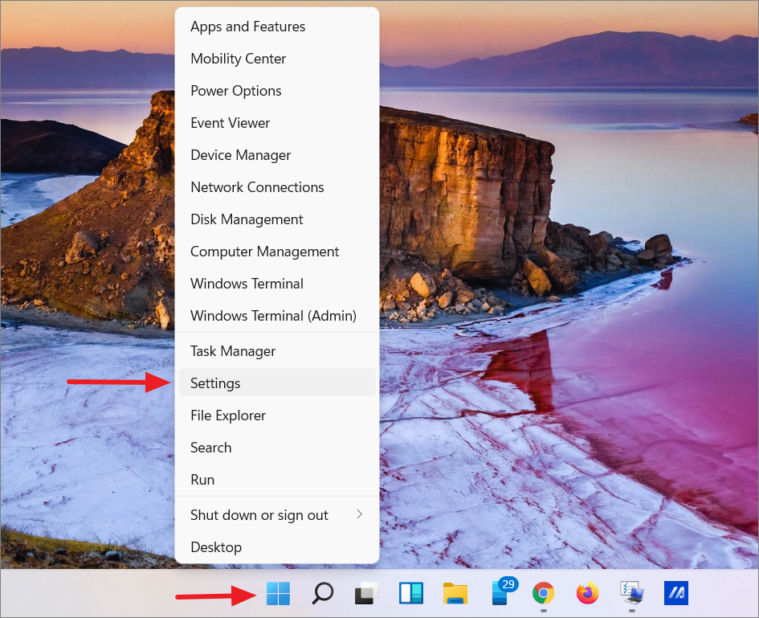
Open the ‘Accounts’ section in the left pane, and click on ‘Family & other users’ on the right pane.
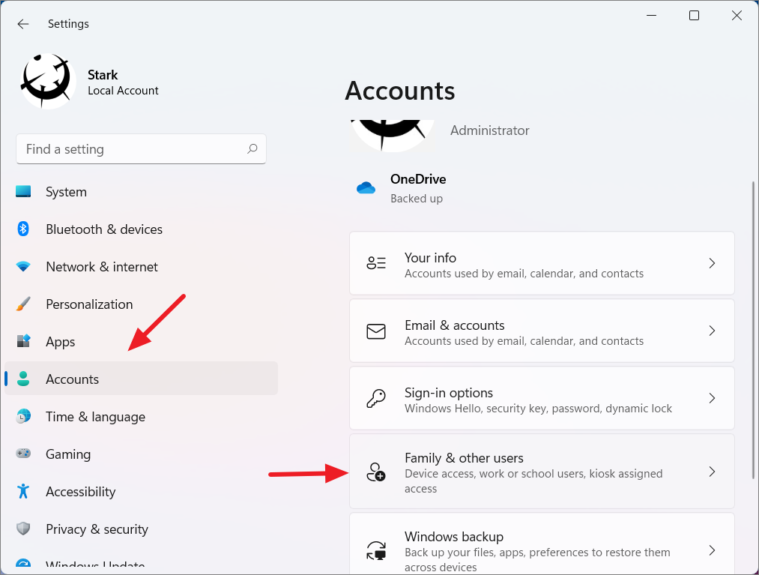
Under the ‘Other users’ section, you’ll find all the user accounts on your system other than your own.
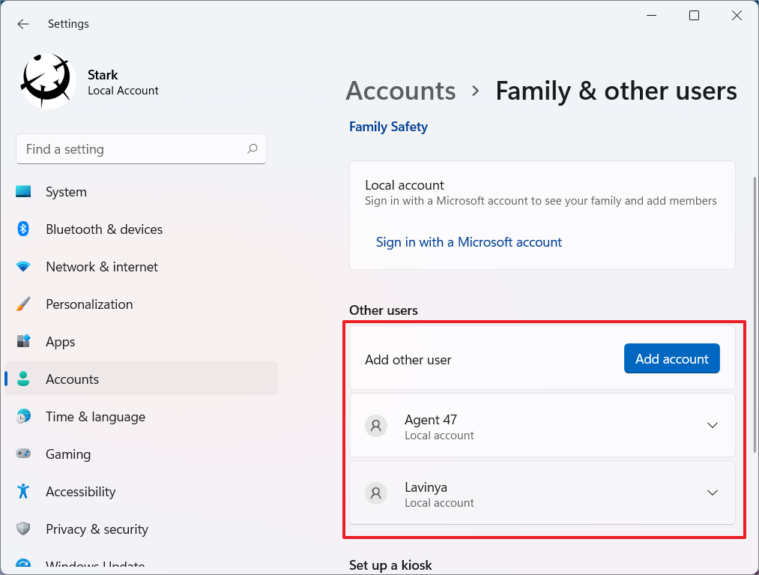
Click or tap the name of the user account you want to make an Administrator and click on the ‘Change account type’ button that’s revealed.

In the ‘Change account type’ window, you’ll see the account name and its type.

Now, open the dropdown menu under the Account type option and select ‘Administrator’. Then, click ‘OK’ to apply the change.
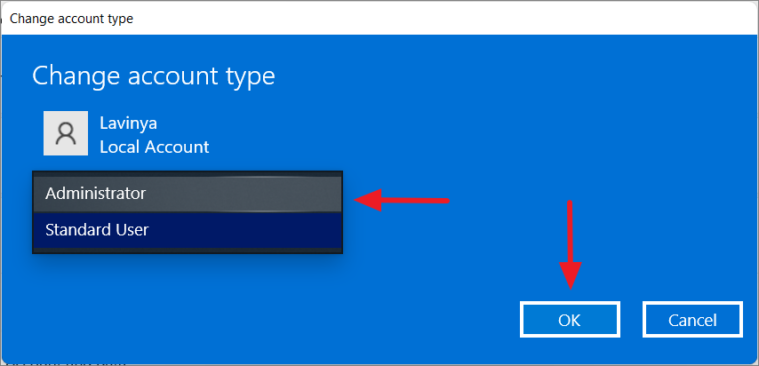
The selected Standard User account will be changed into an Administrator account and will be given all admin rights.
If you want to remove admin privileges and turn an Administrator account into a Standard User account, just select ‘Standard User’ and click ‘OK’ in the ‘Change account type’ window.
Change Administrator On Windows 11 Using Control Panel
The Control Panel utility is present in all of the Windows versions, and it also can be used to change the account type of a user account.
Search for ‘Control Panel’ in the Windows Search and open it.
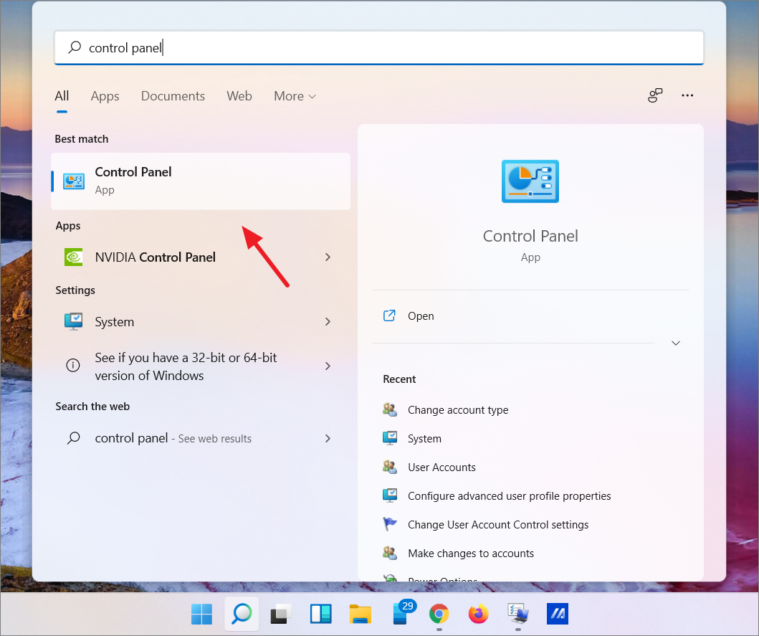
Under the User Accounts category, click on the ‘Change account type’ option.
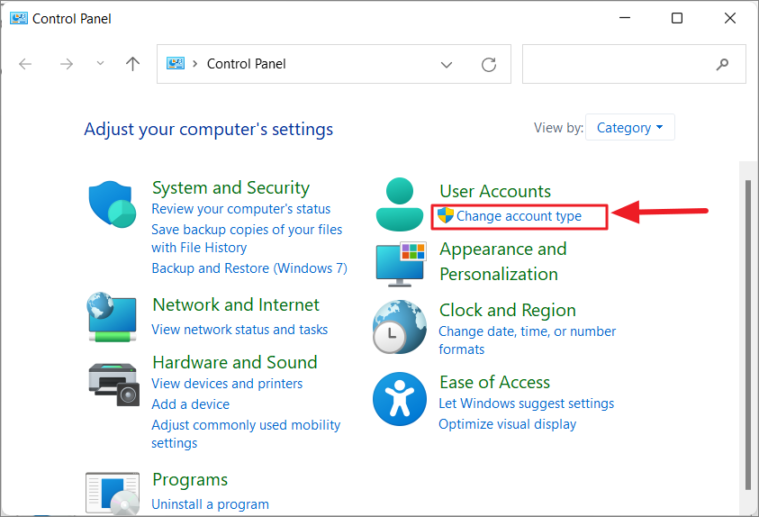
On the Manage Accounts page, you will see a list of local accounts on your Windows 11. Click on the user account that you’d like to change to administrator.
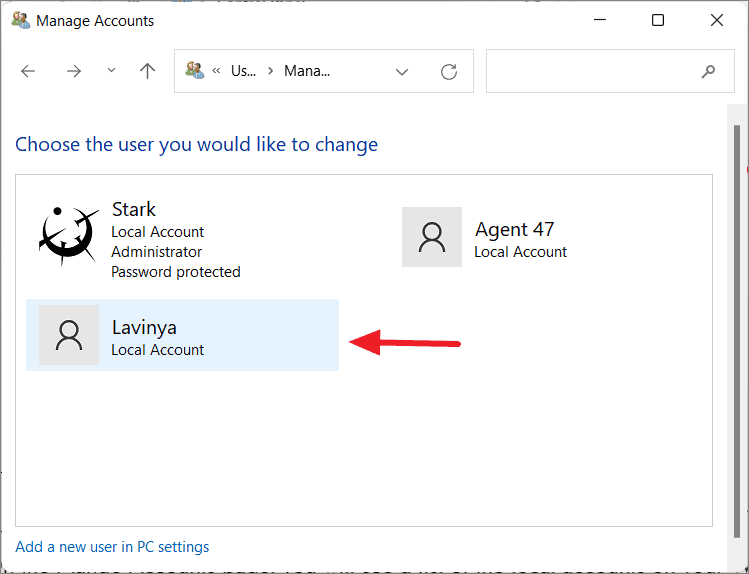
Then, click the ‘Change Account Type’ option on the left.

Next, select Administrator and then click ‘Change Account Type’.
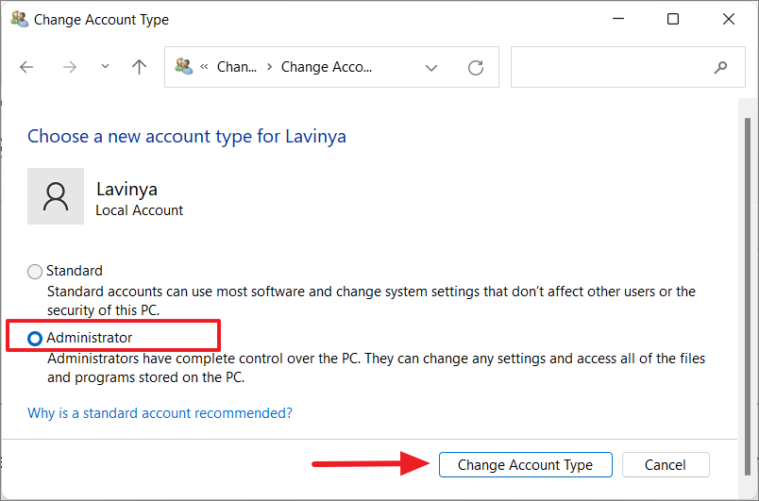
The selected account will be turned into Administrator. Then restart your device to apply the changes. You can also change an account back to ‘Standard’ this way.
Change Administrator on Windows 11 Using User Accounts (netplwiz)
You can also use the account management utility ‘User Accounts’ to change a user to administrator.
To open the User Accounts tool, launch the Run dialog via the shortcut key Windows + R and type netplwiz in the Open field. Then, press Enter or click ‘OK’.
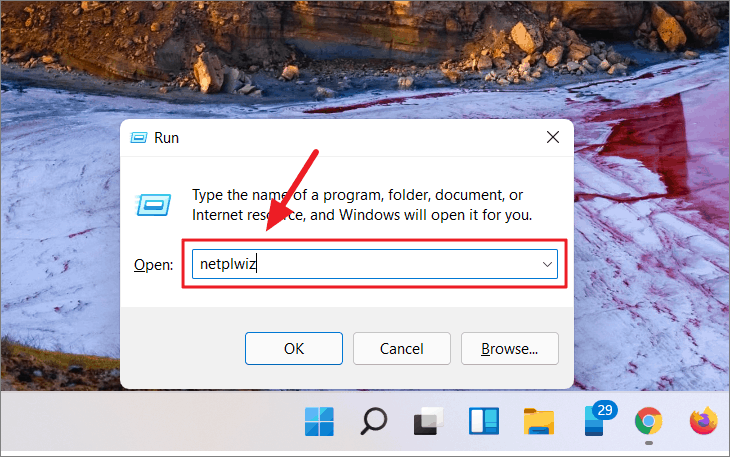
Under the ‘Users’ tab of the User Accounts window, you will see the list of user accounts. Select the account you want to promote and click the ‘Properties’ button.
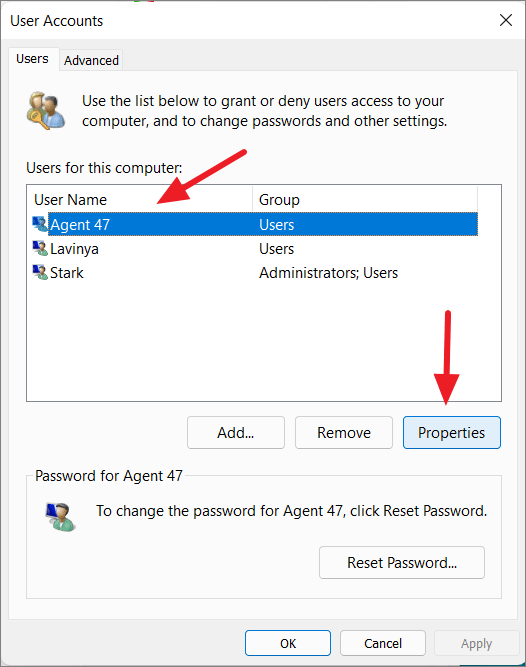
In the next window, switch to the ‘Group Membership’ tab, and then select the ‘Administrator’ option. Then, click ‘Apply’ and press ‘OK’.
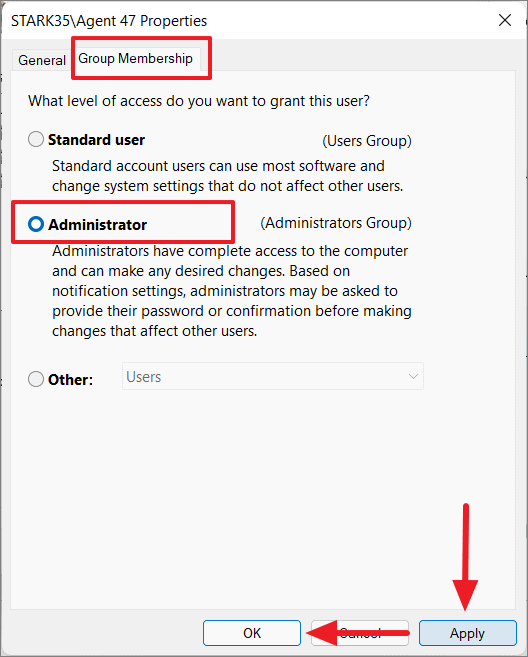
If you select ‘Other’ option, you can choose from an array of different user groups such as Device Owners, Guests, Event Log readers, Remote Management Users, backup operators, etc.
As you can see, the selected account is now an administrator.
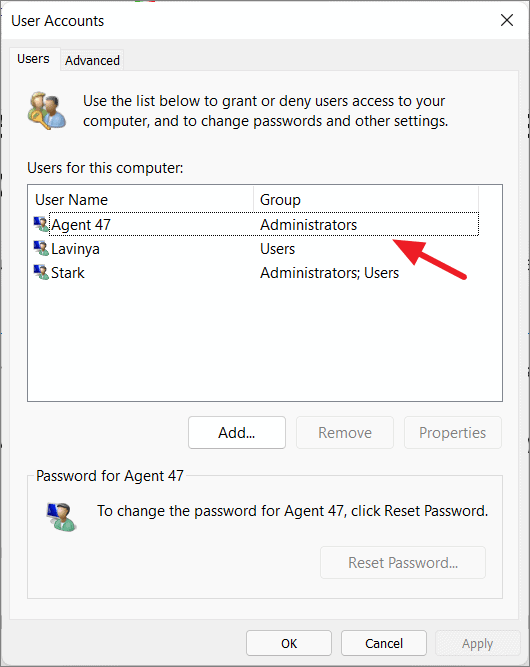
Change Administrator in Windows 11 Using Command Prompt
If you’re a terminal enthusiast, then you can also use an elevated Command Prompt to change an account’s type from Standard to Administrator and vice versa. Search for ‘cmd’ or ‘Command Prompt’ in the Windows search bar and click ‘Run as administrator’ on the right pane.

If User Account Control asks for permission, click ‘Yes’ to continue.

If you want to list all the local user accounts on your device including default accounts, type the below command and press Enter:
net userNote the username you want to convert to administrator.

Then, type the following command to turn a Standard User account into an Administrator account and press Enter:
net localgroup Administrators "Account name" /addAnd replace Account Name with the exact name of the User account you want to change into an Administrator.
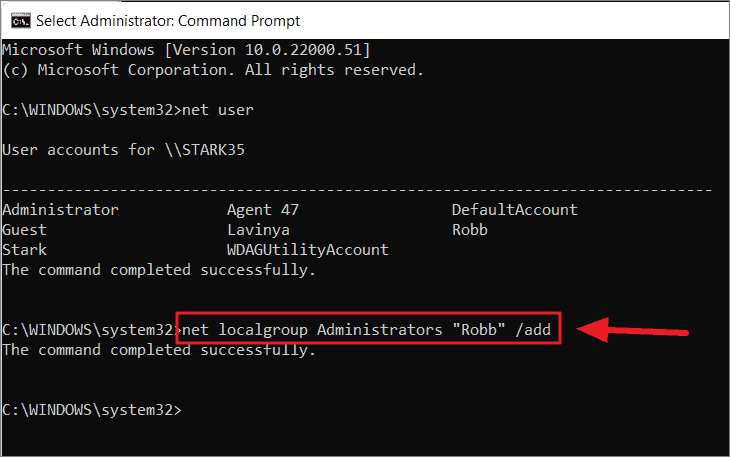
Now, your Standard account is changed to an Administrator account.
If you want to turn an Administrator account into a Standard account and revoke its admin rights, then type the below command:
net localgroup Administrators “Account Name” /delete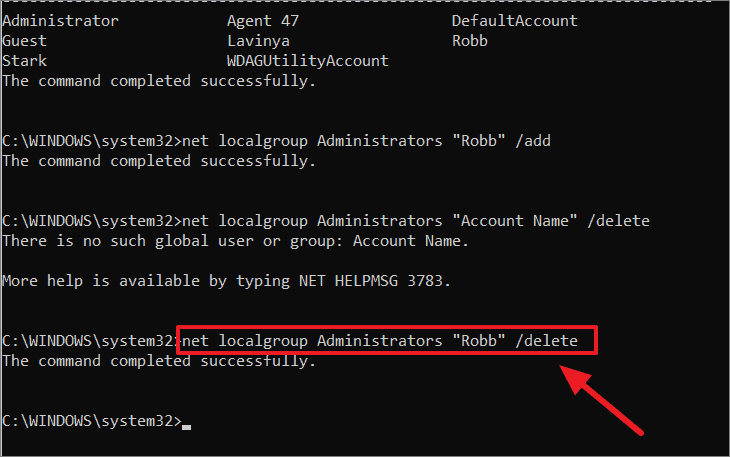
Change Administrator in Windows 11 Using PowerShell
Another way you can change an account type in Windows 11 is by using PowerShell. Windows PowerShell is a task-based command-line tool that allows IT professionals and power users to automate tasks like creating new users, changing passwords, changing account type, and more.
Search for ‘PowerShell’ in the Windows 11 search bar and click ‘Run as administrator’ under Windows PowerShell on the right pane.

This will open PowerShell in an elevated mode. Type the following command to list all the local user accounts and note the user account you want to change:
Get-LocalUser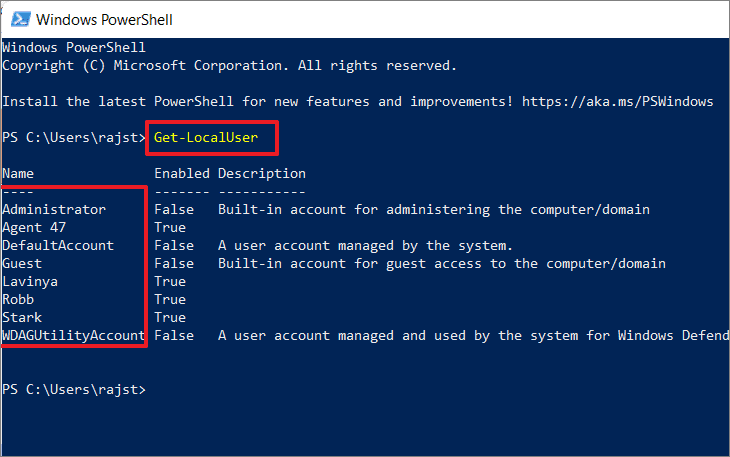
Type the below command to change an account type to administrator, replacing Account Name with the exact name of the account you want to change into an Administrator.:
add-LocalGroupMember -Group “Administrators” -Member “Account Name”Example command:
add-LocalGroupMember -Group “Administrators” -Member “Lavinya”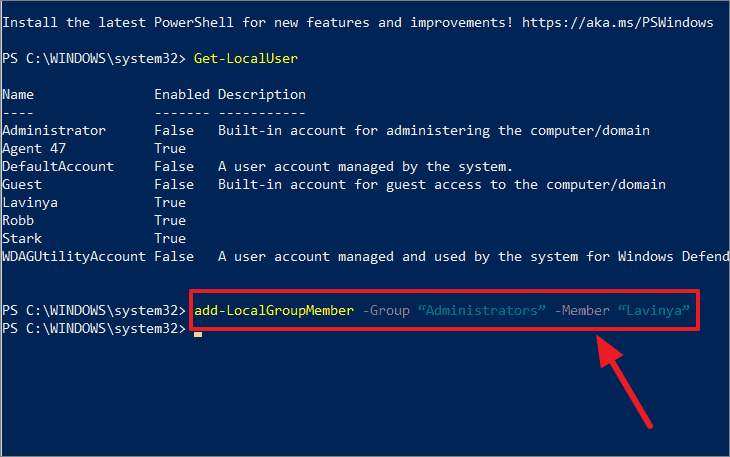
Enter the following command to turn an Administrator account into a Standard account:
remove-LocalGroupMember -Group “Administrators” -Member “Lavinya”This will revoke the administrative rights from the selected account and change the account into a Starndard user.

Conclusion
Changing the administrator on Windows 11 is a straightforward process that can be done using different methods such as Settings, Control Panel, User Accounts, PowerShell, and Command Prompt. Having an administrator account allows you to perform actions like installing or removing software, changing system settings, and adding or deleting user accounts. It is essential to note that you must have administrator access to change another user's account type from standard to administrator. By following the steps outlined in this article, you can easily give family members or friends full access to your computer system.







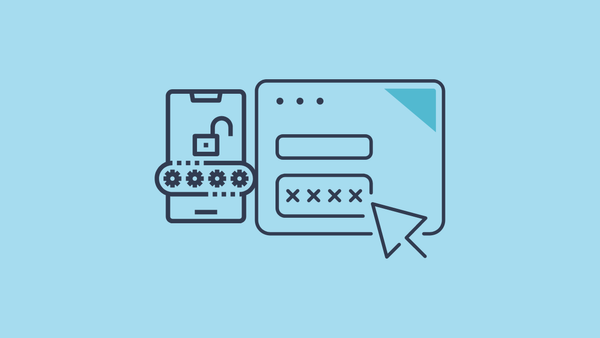

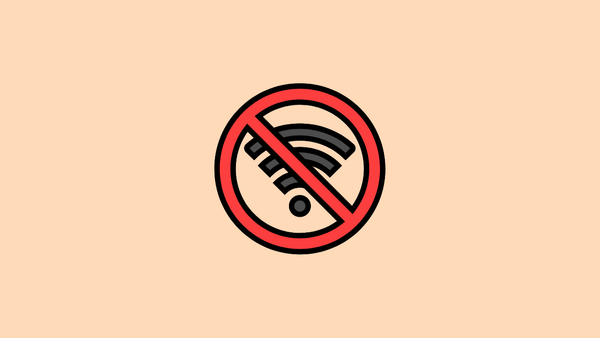

Member discussion